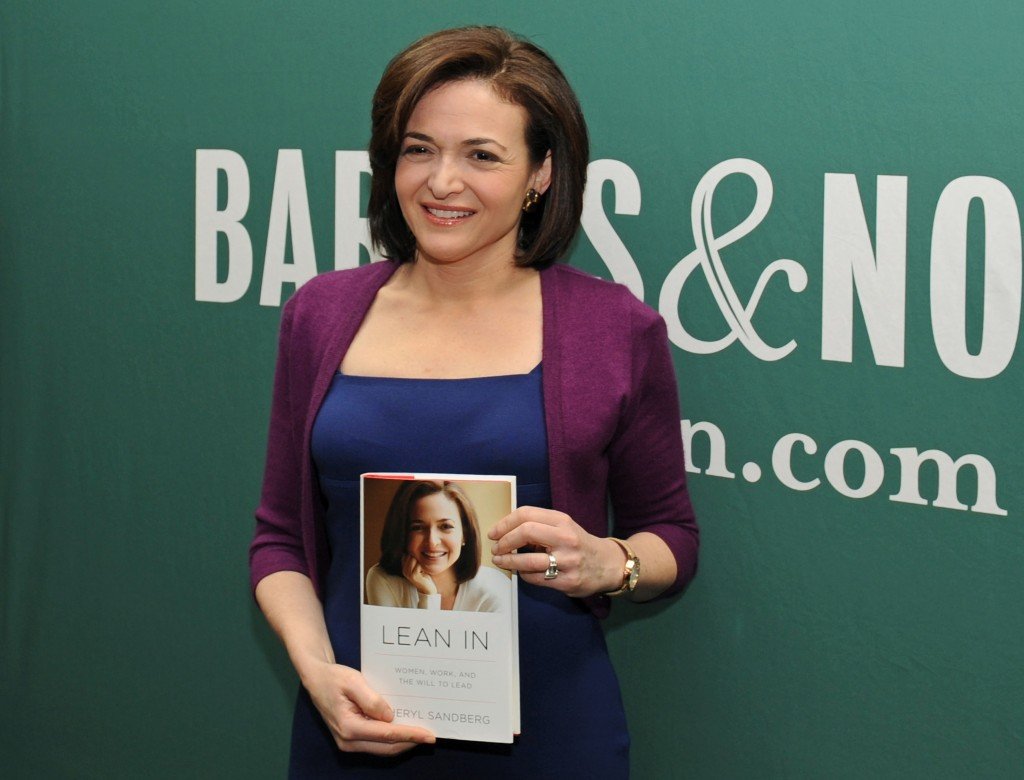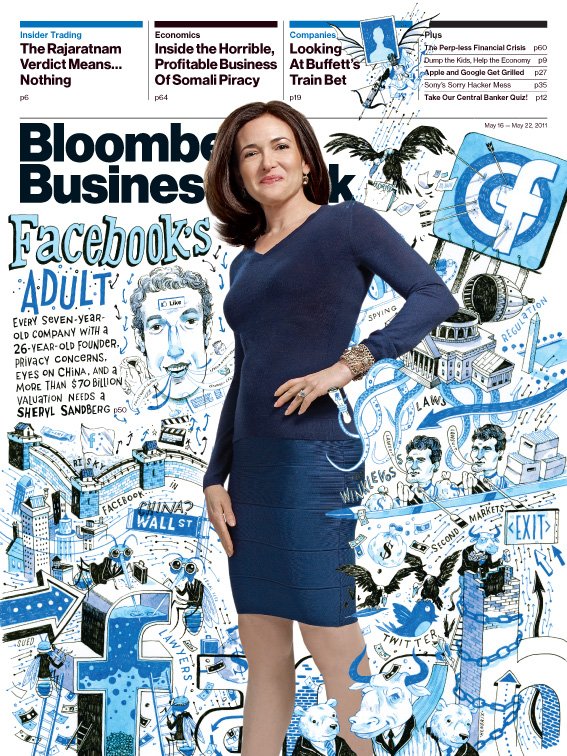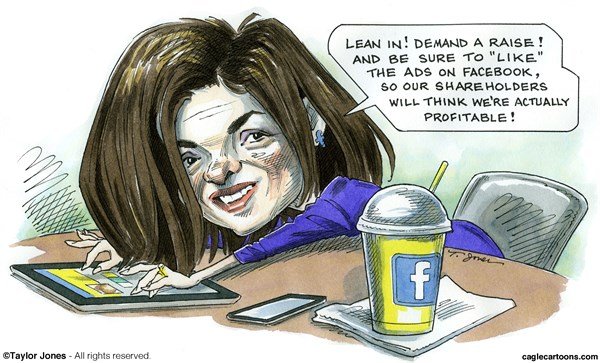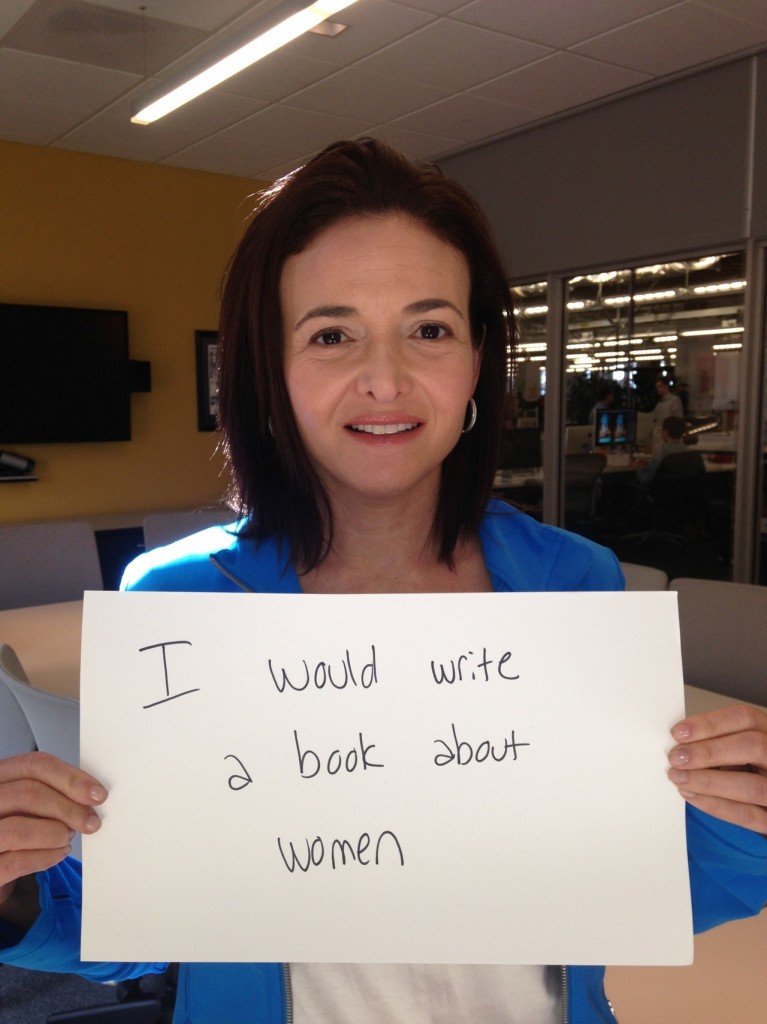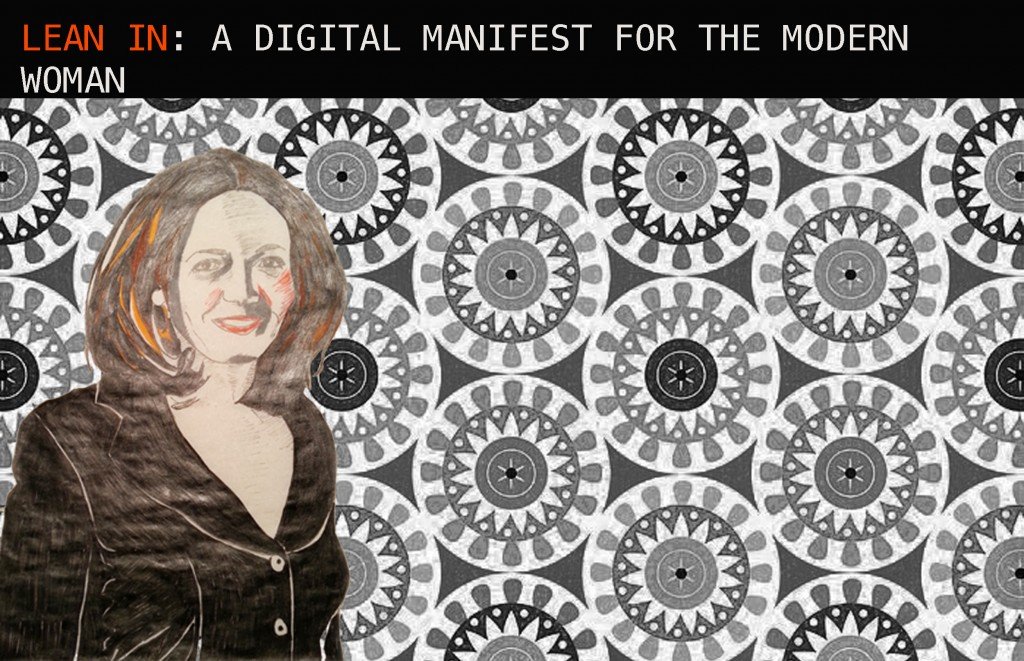
“Lean In: Women, Work, and the Will to Lead” is the title of a book published last March by Facebook COO Sheryl Sandberg. The book, that was co-written with TV writer Nell Scovell launched an immediate turmoil as it set up a whole new conversation on feminism in the work place. Lean In is based on the personal details of Sheryl Sandberg´s life, considered to be the sixth most powerful woman in the world by Forbes, and it starts with a good story and a promising title to its introduction: Internalizing the Revolution.
In 2004 Sheryl Sandberg was working for the online sales and operation group at Google. She had joined Google three and a half years before, in a crucial moment of the firm, which was precisely the time before Google was about to transform itself from an obscure start-up of a hundred employees working in a run-down office building, into a huge corporation with thousands of people working from a multi building campus. Heavily pregnant, Sheryl parked her park and painfully walked a long distance in order to enter the main building of the company. That night, when she commented this episode to her husband, he pointed out to her that Yahoo had designed various parking spots that were exclusive to expectant mothers. The day after, the first thing Sheryl did, was to enter the messy large office of Larry Page and Sergey Brin, the founders of Google to find Sergei doing Yoga. As Sergei strained to maintain his intricate yoga position by the corner of his large office, he listened to what Sheryl had to say: Google needed to have very quickly parking lots exclusive to pregnant women! Sergei agreed immediately, both noticing with dismay how that idea had never occurred to none of them before!
What revolution is Sheryl Sandberg talking about with this story ? The one that notwithstanding the many gender biases that still operate all over the workplace, excuses and justifications won’t get women anywhere. Instead, women should believe in themselves, give it all, “lean in” and “don’t leave before you leave”. What Sheryl Sandberg means with leaning in, is that women should never doubt their ability to pursue their dreams. But this implies they should look for an internal revolution that will make them move away from old stereotypes. One of these is the conception that by combining work with family life, one will inevitable miss out many career oportunities. Rather than just accepting these ideas, women should acknowledge that they have internalized in themselves, specific mind frames, that tend to passivity, even before the occurrence of maternity. Leaning in could therefore be understood as: taking responsibility for your own life and dreams. Through this attitude you can promote a worthy cycle of action: as you assume you can combine work and family, you take the necessary steps to do it. Then, as you succeed professionally, you’re in a better position then ever to ask for what you need and to make changes that could benefit both you and others. In order to do so, women have to be sure of what do they want, avoid the victimhood mind frame set (that puts blames on society, husbands, tradition…) and then, build up in themselves the energy to really move into action.
This book was not the first time that Sandberg has approached issues of women´s empowerment, as in December 2010, she gave a TED speech entitled “Why we have too few women leaders”.:
Her talk started by inviting women to make both an happy admission and the recognition of a problem: “Let´s start out by admitting: we are lucky! We don´t live in a world our mothers lived in, our grandmother lived in, where career choices for women were so limited. But there is still a problem: women are not making it to the top of any profession, in any place in the world.” Why? She constantly asked.
She followed up on these ideas, with a commencement address to the Barnard class of 2011 and both videos became viral. The debate was launched, and would be further developed in her book, bolstered by extensive references to scholarly works and popular literature. Sheryl Sandberg´s book came at the right moment as it gave answers to questions highly educated women are actually posing to themselves. Why are we less better off than our male colleagues?
The book did really well, as it sold nearly 150,000 copies in its first week, quickly climbing to the top ranks of non-fiction bestseller lists.
But Sandberg’s biggest accomplishments came much before her book, and these were the ones gathered in her impressive career as a businesswoman. The latest one of these happened this year, in Menlo Park, where Facebook headquarters is located: after convincing the leadership of Facebook to start adding ads to its mobile news feed, Sheryl Sandberg turned Facebook into a profitable company, earning more U.S. mobile revenue than any other publisher with an 18.4% share of the entire market.
Sheryl Sandberg, which is considered to be one of the ten top most powerful women in the World, was born in 1969 to a Jewish Family living in Watching DC. Always the top of her class, Sandberg enrolled at Harvard College, graduating in 1991 with a BA in Economics. While in Harvard, Sandberg met professor Larry Summers, who became her mentor and adviser. Summers recruited her to work at the World Bank, where she worked for one year on health projects in India dealing with leprosy, AIDS and blindness. After earning her MBA taken at Harvard Business School, Sandberg joined Google as Vice President of Global Online Sales & Operations, working there for 7 years. She was responsible for online sales of Google’s advertising & publishing products and also for sales operations of Google’s consumer products and Google Book Search. A turning moment in her career happened in late 2007, when she met Mark Zuckerberg at a Christmas party. They started talking and got along very well. Even though Zuckerberg had never thought of having a formal COO, as he got to know her better, particularly during the Davos World Economic Forum, that happened in 2008, he decided to contract her. Through the “hands” of Sheryl Sandberg, Facebook transformed itself from a company that was “primarily interested in building a really cool site” to a profitable one.
Looking at her impressive curriculum one can see and amaze how she made it to the top of the notoriously male-dominated world of Silicon Valley, where the scarcity of women among the ranks of computer scientists and engineers is still very noticeable. As such, even though 150 years have passed since the suffragette movement pioneered the long road to gender equality, when we really look at the numbers, it looks like women still have to march over a long strenuous path in a male dominated world. Certainly Sandberg was able to do it, and her impressive achievements were possible even though she is the mother of two children, as unfortunately, combining motherhood with career is still an issue for women, particularly when it comes to top positions of leadership. In her book, filled with various tales emerging from her personal story, she narrates how she had to figure out strategies to balance her personal career ambitions, with the cultural burden put upon her shoulders as “a mom” that is supposedly the main responsible for the well being of her offspring. Sandberg´s advice to tackle this concern (based on her experience) is to approach motherhood in a different way by “making your partner a real partner”, recalling how she and her husband set patterns early on in their relationship that made them genuine equals when it came to child care. Curiously Wikipedia sets Sandberg and her husband, David Goldberg, the current CEO of SurveyMonkey, as being an example of the Shared Earning/Shared Parenting Marriage, also known as Peer Marriage which is a type of marriage where the partners choose at the outset of the marriage to share the work of child raising, earning money, house chores and recreation time in nearly equal fashion across all four domains.
But it is not only childcare issues that bring gender inequality, and Sandberg points to us other societal barriers such as the fact that women still work what is called the double day (working both at their jobs and at home) and the way society undervalues the work done inside the home as opposed to work outside the home. Along with the latter there are the barriers we have referred too earlier, of women self internalizing systematic discrimination and societal gender roles. Sandberg argues that in order for change to happen in the world in general, women need to break down these societal and personal barriers by striving for not only their personal dreams, but also roles of leadership. By having more female voices in positions of power there will be more equitable opportunities created for everyone: As she says:
Criticism to Sandberg ideas suggest that one could look at the questions it raises the other way around, i.e. by asking companies to figure out ways to Lean in : Likewise, Anne-Marie Slaughter, a professor of politics and international affairs at Princeton notices : It is hard not to notice that her narrative is what corporate America wants to hear. For both the women who have made it and the men who work with them, it is cheaper and more comfortable to believe that what they need to do is simply urge younger women to be more like them, to think differently and negotiate more effectively, rather than make major changes in the way their companies work.
On a similar fashion Leah Belsky and Michal Tsur , director of company Kaltura, call for a redefinition of the idea of “leaning in”, noticing how it is important “ not pushing harder”. In their opinion the secret is : “being attentive, objective and focused on opportunities that emerge in life and work” never forgetting as well that: “women who are further up the corporate ladder, leaning in is about ensuring that the precedents that you set and the ways in which you shape businesses will help to smooth the path for younger women to flourish too”.
It looks like Sheryl Sandberg is precisely doing this. After the launch of her book, Sandberg founded the organization Lean In, that tries to promote the values and ideas she delivers in her book. In it she hosts a new blog, which encourages women to speak out about what they really want to say, but can’t, by featuring pictures of women holding up a sheet of paper with their secret ambition or fear written on it. With that one simple act, it makes you confront what your goal is, and makes it somehow more real.
Sheryl Sandberg continues to feed the debate insistently: As I was surfing through Facebook yesterday I came across a post she had just delivered, that shared a clip from the show “Scandal”, In it, Lisa Kudrow’ s character, Congresswoman Josephine Marcus, pointed out aggressively to a reporter how he was subtletly discriminating her due to her gender. Sheryl Sandberg commented on the clip by posting how it was: “A great example of a Lean In role model for women and men alike”
For women to lean in towards their work, the truth is men have to lean back home. As Sandberg says: “A truly equal world would be one where women ran half our countries and companies, and men ran half our homes. This world, would be a better world.”
Read More:
mastering the usajobs resume builder
what are some long-term consequences of not learning to save while you’re young?
how to easily navigate your ziprecruiter login for job seekers and employers?

Maria Fonseca is the Editor and Infographic Artist for IntelligentHQ. She is also a thought leader writing about social innovation, sharing economy, social business, and the commons. Aside her work for IntelligentHQ, Maria Fonseca is a visual artist and filmmaker that has exhibited widely in international events such as Manifesta 5, Sao Paulo Biennial, Photo Espana, Moderna Museet in Stockholm, Joshibi University and many others. She concluded her PhD on essayistic filmmaking , taken at University of Westminster in London and is preparing her post doc that will explore the links between creativity and the sharing economy.


